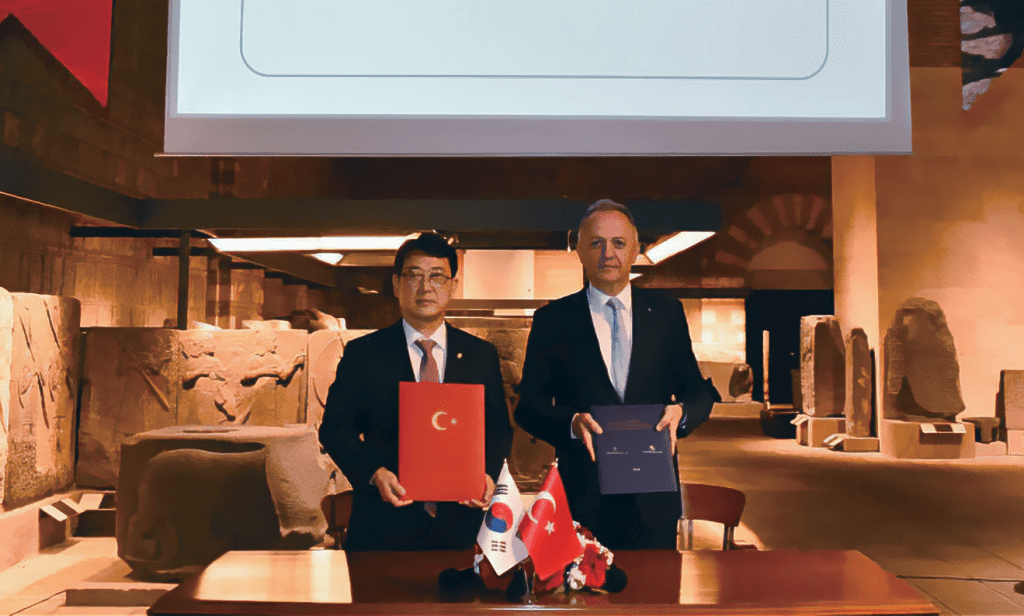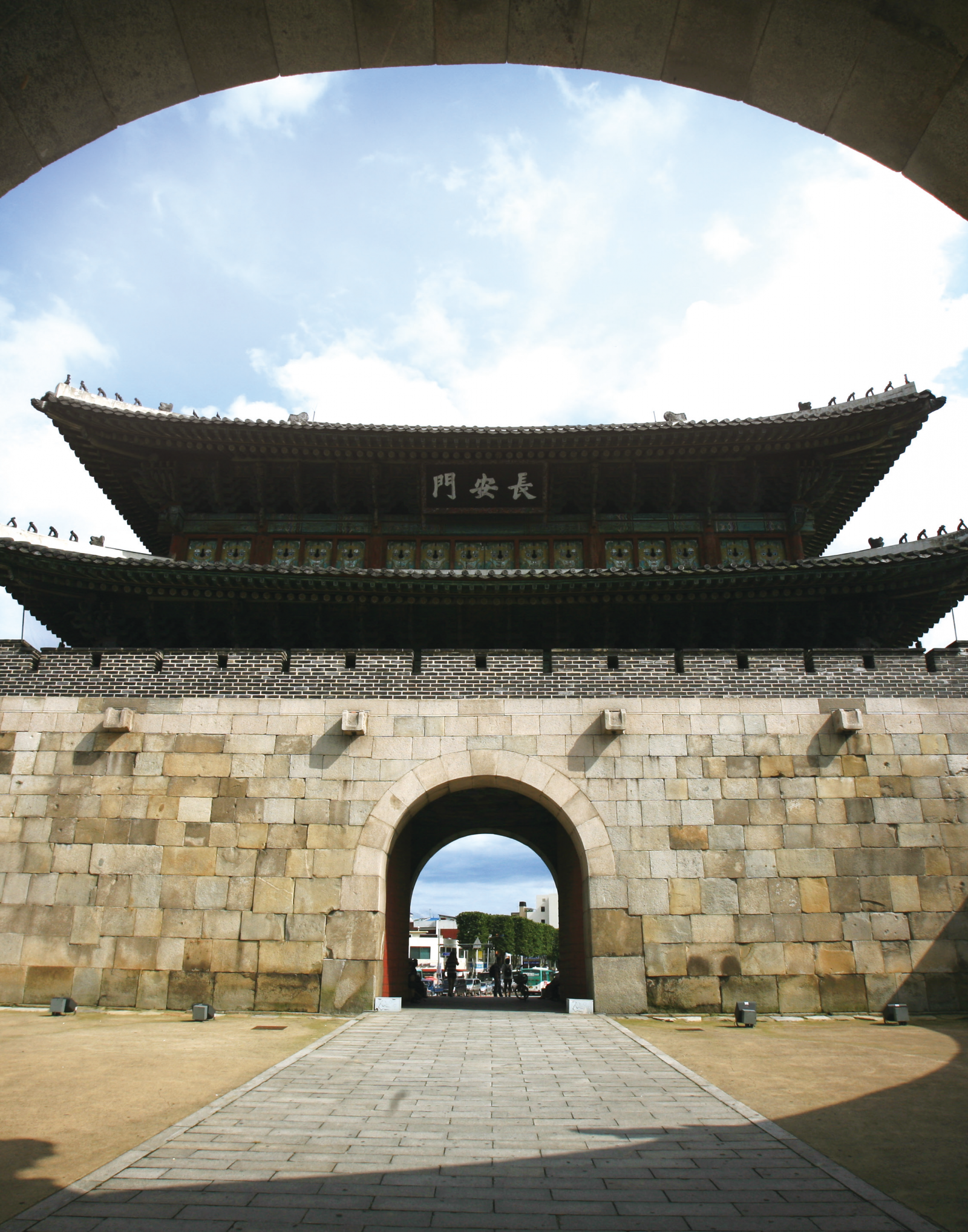1.NRICH Receives Prime Minister’s Commendation for Excellence in National Records Management
The National Research Institute of Cultural Heritage (NRICH) under the Korea Heritage Service has been awarded the Prime Minister’s Commendation for its exceptional performance in the 2023 public institutional evaluation for records management.Established in 2007, the evaluation aims to bolster public institutions’ record management capabilities and foster continuous improvement. After inaugurating its archives in 2014, NRICH previously earned recognition for excellent record management in 2022, receiving the Minister of the Interior and Safety’s Award. The Prime Minister’s Commendation marks the second time NRICH has been recognized as an outstanding institution in this domain. The evaluation for 2023 encompassed three key areas: “Basis for Record Management Work,” “Record Management Implementation,” and “Optional Indicators (Autonomy, Policy).” NRICH achieved a remarkable total score of 98.68. This score not only surpassed the average of 242 participating organizations but also secured the NRICH the highest ranking among 147 field offices of central government agencies, underscoring the significance of this accomplishment.


2.NRICH Signs Sponsorship Agreement with Smilegate to Conserve and Utilize Cultural Heritage
NRICH, affiliated with the Korea Heritage Service, entered into a collaborative agreement with Smilegate on May 29 to support the conservation and utilization of cultural heritage, ultimately aiming to generate future value for Korea Heritage.The agreement encompasses several key initiatives: safeguarding Korea Heritage and promoting historical and cultural value through targeted sponsorship for conservation and utilization efforts; fostering mutual cooperation to ensure sustainable Korea Heritage research and the effective dissemination of research outcomes; and incorporating special events into “Lord Nine,” an upcoming game scheduled for release in the third quarter of this year by Smilegate Megaport, a subsidiary game distributor of Smilegate.Through this partnership, Smilegate has pledged a donation of KRW 30 million to NRICH. The National Trust for Cultural Heritage will manage this contribution, earmarking it specifically for the analysis and restoration of artifacts unearthed during the Gyeongju National Institute of Cultural Heritage’s excavation of Tomb No. 41 in the Jjoksaem District of the Daereungwon Ancient Tomb Complex, Gyeongju.


3.Over 400 Donated Photographs of “Petroglyphs of Bangudae Terrace” and “Seokguram Grotto, Gyeongju” Released after 4 Years
NRICH, part of the Korea Heritage Service, has newly published a significant collection of historical photographs, including 108 images of the “Petroglyphs of Bangudae Terrace in Daegok-ri, Ulju,” donated by scholar Kang Woobang, and 295 photographs of the “Seokguram Grotto, Gyeongju,” contributed by the late Korea Heritage photographer Han Seokhong.In 2019, NRICH received a substantial donation exceeding 70,000 records from Kang and the late Han’s family (over 60,000 from Kang and 1,172 from the late Han’s family). The donated materials include photographs and films captured for personal research, as well as images featured in international exhibitions, catalogues, and scholarly works.Kang’s photographs of the Petroglyphs of Bangudae Terrace, taken in the 1990s, offer a vivid glimpse of the site at that time. The late Han’s photographs of Seokguram Grotto provide detailed views of the main Buddha statue and surrounding figures, serving as an invaluable resource for researchers and enthusiasts.


4.NRICH Signs MOU for Cultural Heritage Exchange and Cooperation Between Korea and Türkiye
In April, the Korea Heritage Service concluded a memorandum of understanding (MOU) with Türkiye’s Ministry of Culture and Tourism for cooperation and exchange in the field of cultural heritage.As part of this collaboration, NRICH has committed to participating in a joint excavation project at the Kültepe-Kanesh site in Türkiye. This five-year initiative, set to commence next year and continue until 2029, will be conducted in partnership with Ankara University. The Kültepe-Kanesh ruins, located 20 kilometers northeast of Kayseri, a city of Türkiye, represent the remains of a 3,900-year- old urban center at the crossroads of East-West trade routes. This UNESCO World Heritage Site is notable for the discovery of the “Archives of Old Assyrian Traders” in cuneiform, the world’s earliest known writing system.Currently, Ankara University is leading the excavation efforts at Kültepe-Kanesh, with international participation from institutions such as the University of Milan, Okayama University, and Harvard University. NRICH, slated to join the efforts next year, will be the first Korean institution specializing in cultural heritage investigation to participate in this international research endeavor.


5.Tongyeong Wonpyeong Elementary School Students Explore Gaya History and Culture as One-Day Archaeologists
The Gaya National Research Institute of Cultural Heritage, under the Korea Heritage Service, in collaboration with the Tongyeong Office of Education in South Gyeongsang Province, conducted the “2024 Children’s Cultural Heritage Outreach Learning Program” on May 29 and 30. This program engaged 46 sixth-grade students from Wonpyeong Elementary School in Tongyeong, offering them a unique opportunity to delve into the rich history and culture of the Gaya confederacy while instilling in them a sense of regional pride. The program began with an informative session on Gaya’s history and culture using visual aids. It then progressed to a “one-day archaeologist experience,” where students interacted with replicas of earthenware resembling mounted dishes excavated from Tomb No. 10 of the Ancient Tombs in Dohang-ri, Haman. Participants examined these artifacts, completed description cards, and pieced together fragmentary remains.The hands-on approach proved highly engaging, with students enthusiastically exploring local history, interacting with pottery replicas, and documenting their findings. The program’s success has prompted the Tongyeong Office of Education and other local authorities to consider expanding such learning opportunities to elementary school students across the region.


6.International Conference Explores Maintenance and Utilization of “Ancient Tombs in Dasi-myeon, Naju”
The National Research Institute for Cultural Heritage of Naju, a branch of the Korea Heritage Service, hosted an international conference on May 16 titled “Research on Ancient Tombs in Dasi-myeon, Naju and Surrounding Ruins – Current Status and Significance.”This event commemorated the launch of the Korea Heritage Service and the 10th anniversary of discovering the Gilt- bronze Shoes (Treasure) from the Ancient Tombs in Jeongchon Village, Bogam-ri, Naju. The conference reviewed findings from investigations of the “Ancient Tombs in Dasi-myeon, Naju,” including the designated Historic Site of Ancient Tombs in Bogam-ri and the undesignated Jeongchon Tombs. It explored strategies for expanding historic site designations and approaches for maintenance and utilization within the Korea Heritage system. The agenda included a keynote lecture, seven thematic presentations, and a discussion session. The presentations were followed by a scholarly review of the history of the people who built the tombs. The conference concluded with a discussion on the maintenance and utilization of the tombs, comparing relic maintenance and restoration practices in China and Japan.


7.Excavation Results Unveiled for Jangmi Sanseong Fortress in Chungju, a Korea Heritage Site Representative of the Jungwon Region
The Jungwon National Research Institute of Cultural Heritage, operating under the Korea Heritage Service, presented its findings and artifacts from the Jangmi Sanseong Fortress excavation site in Chungju on May 22, in an event planned to coincide with the launch of the Korea Heritage Service. Jangmi Sanseong Fortress, strategically positioned at the entrance to the Chungju Basin along the Hangang River, is a prominent fortress in the Jungwon Region, and was once a contested battleground among the Three Kingdoms of Korea. The fortress has long been a subject of archaeological interest, with lingering questions about who built the fortress, when it was constructed, and the nature of its internal living spaces. To address these queries, the Jungwon National Research Institute of Cultural Heritage, partnering with Chungju City, began a series of excavations in October 2022. This ongoing effort aims to uncover structural details of the fortress’s walls, reveal the composition and use of internal facilities, trace the fortress’s chronological evolution, and develop conservation and utilization strategies. Notable discoveries to date include new insights into the northern wall’s central section structure and construction techniques, the mapping of internal facility layout, and a substantial collection of Baekje pottery, likely used by the fortress’s initial builders.


8.Cooperation with Gochang County to Conserve and Conduct Research on the World Heritage Site “Dolmens in Jungnim-ri, Gochang”
On April 23, the Wanju National Research Institute of Cultural Heritage, part of the Korea Heritage Service, signed a memorandum of understanding (MOU) with Gochang County at the Gochang County Office. This MOU aims to promote a partnership for academic research and the utilization of the “Dolmens in Jungnim-ri, a UNESCO World Heritage Site in Gochang. The “Dolmens in Jungnim-ri, Gochang” site holds dual distinction as a nationally designated historical site and a UNESCO World Heritage Site (listed in 2000). It constitutes the largest concentration of dolmens on the Korean Peninsula, with over 550 individual structures, and is noteworthy for its diverse array of dolmen types, including table-type and unsupported-capstone varieties, all coexisting within a single area. Through this MOU, the Wanju National Research Institute of Cultural Heritage and Gochang County have committed to collaborative efforts in academic research, conservation management, and the utilization of research findings related to the dolmens site. The two organizations plan to conduct a wide range of interdisciplinary research projects focusing on these ancient monuments, including comprehensive distribution status surveys, comprehensive excavations, ancient topography and landscape analysis utilizing airborne LiDAR survey, and research on quarry sites through scientific analysis of dolmen stones and soil samples.




